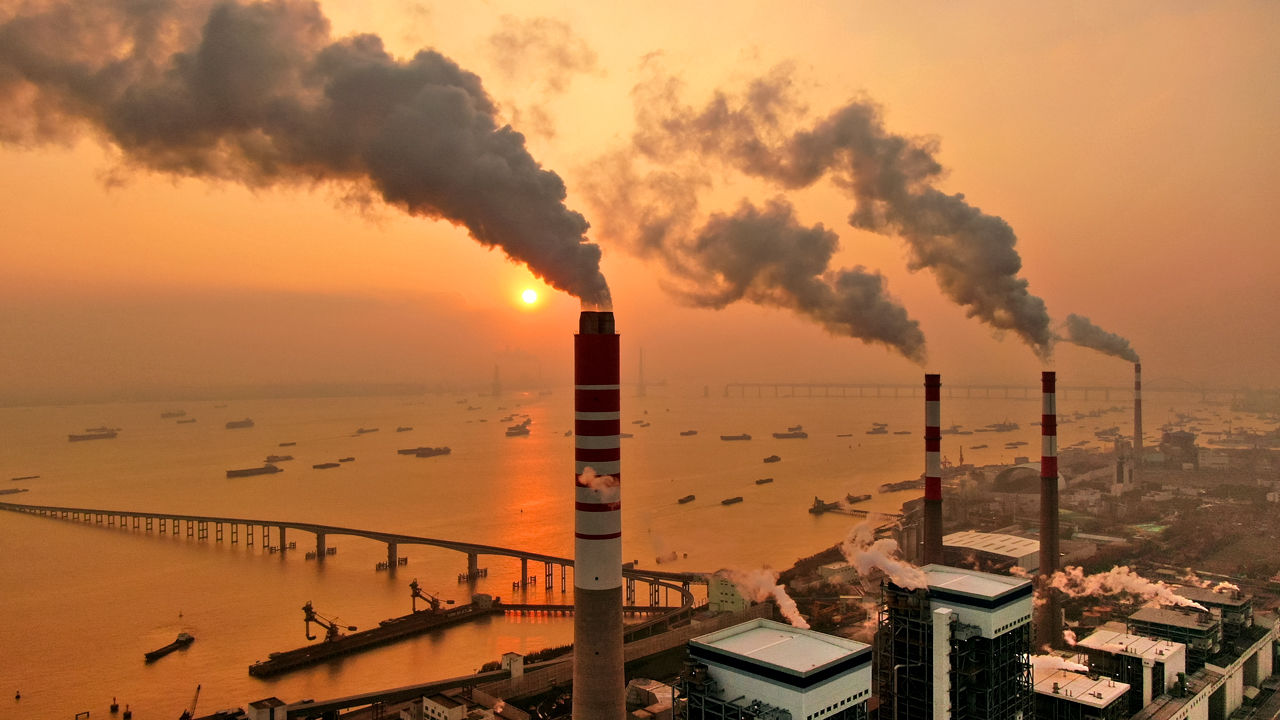With an increasing number of countries committing to “net-zero” carbon emissions by 2050, clearly international economic policy is shifting towards a lower carbon future.
International trade will likely be deeply affected in multiple ways by the decarbonization process. During this transition to a green economy, countries incurring heavy costs will expect their emission reduction efforts to be matched by their trading partners. They may also try to ensure that other countries are not undercutting efforts to reduce greenhouse gas emissions. Border carbon taxes acting in a similar way to countervailing duties could well become more common.
Taxing carbon
To many embarking on a costly exercise in carbon reduction, there is little point if other parts of the world will carry on producing carbon at an ever-faster rate. Burden sharing will be key.
Such a policy direction may prove problematic for China and multinational corporations (MNCs) operating in China. As the most carbon-intensive of the three major economic blocs, China-made products are likely to be heavily taxed when imported. This strikes at the root of China’s neo-mercantilism. In recent decades, China’s manufacturing and export prowess has been driven by deep and broad industrial policy. The goal is to create self-reinforcing industrial clusters that enhance competitiveness, engineer comparative advantage, and help secure a dominant market share in many industries.
Carbon intensity and subsidies
The de-carbonization of the global economy places China in a difficult position.
China generates the largest CO2 emissions in the world. [1] China’s carbon emissions are disproportionately large no matter how they are measured. A nation that accounts for about 17% of global GDP and 18% of the world’s population produces 28% of the world’s greenhouse gas emissions. China’s CO2 emissions per dollar of GDP are running at about 3 times that of the EU.
But what explains the higher carbon emissions in China is the country’s mix of energy sources combined with inefficient use – not the structure of its economy.
The key culprit in China is coal. Some 60% of China’s electricity is generated by burning coal. China is also continuing to expand its coal fired generating capacity despite its vow to be carbon net neutral by 2060 with peak emissions by 2030. Today, for every unit of energy China consumes, it is producing about 50% more carbon than the US or EU.
As a result of its carbon intensive growth model and the economy’s rapid growth, China’s greenhouse gas emissions have multiplied four-fold since 1990, from 2.5 billion tons to 10 billion tons per year. This rise accounts for over 50% of the world increase since 1990. Annually, total emissions are about 3 times those of the EU and twice those of the United States. In contrast, since 1990 CO2 emissions in the US peaked in 2007 and have declined by an average of 1.3% every year.[3] In the same period, carbon emissions in the EU have shrunk by 23% while emissions from the UK fell by 41%.[4]
Where does this leave MNCs operating in China?
Foreign companies operating in China appear to be buffeted by the perfect storm of events. China’s geopolitical belligerence continues to alienate large parts of global public opinion and cause public relations issues for MNCs deeply engaged in China. The Trump administration’s tariffs are yet to be removed, technology sanctions remain in place and reports of human rights abuses appear to embroil many more companies. The profitability of doing business in China needs to be weighed against the reputational damage of association with the regime.
Future environment policies may now impose a monetary cost on businesses manufacturing in China for export. A move towards pricing carbon emissions and using market mechanisms to crowd out high carbon emitting producers is likely to penalize China-made products, leveling the playing field and potentially removing a long-standing financial incentive to locate manufacturing in China. Over the coming eighteen months, we could see renewed vigor in industrial relocation out of China driven by carbon taxes.
[1] China: CO2 Country Profile, Our World in Data, https://ourworldindata.org/co2/country/china
[2] World Bank Open database
[3] EIA report: US Energy-Related Carbon Dioxide Emissions, 2019. https://www.eia.gov/environment/emissions/carbon/pdf/2019_co2analysis.pdf
[4] EU Climate Action Progress Report. https://ec.europa.eu/clima/sites/default/files/strategies/progress/docs/com_2019_559_en.pdf
[5] International Institute for Sustainable Development, Global Subsidies Initiative, https://www.iisd.org/gsi/faqs/china
© The Hinrich Foundation. See our website Terms and conditions for our copyright and reprint policy. All statements of fact and the views, conclusions and recommendations expressed in this publication are the sole responsibility of the author(s).






